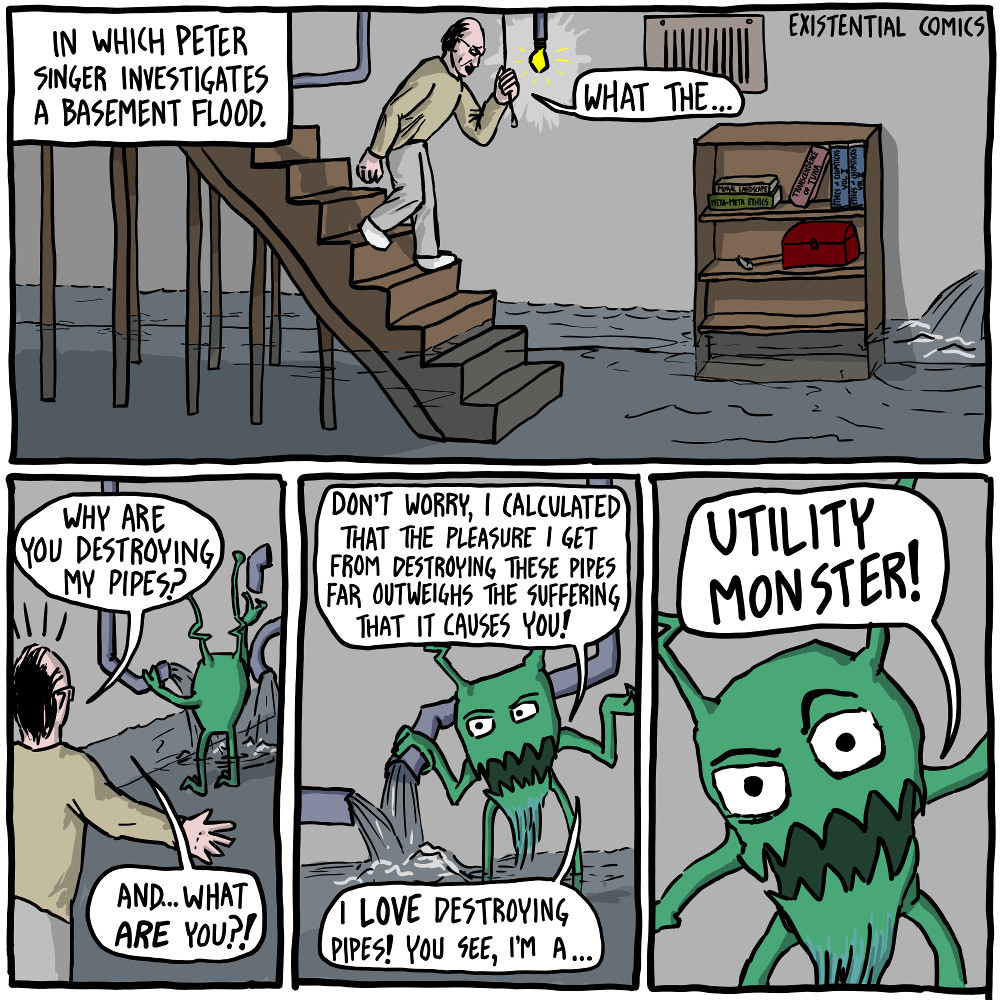Economics, especially in the modern school is broadly influenced by the utilitarian concept of utility. More so since the labor theory of value has been broadly replaced by the theory of marginal utility.
Additionally, perverse incentives are commonly understood and well documented, and seem to be small scale imitations of Nozick's classical "utility monster".
Are there any observations of larger "utility monsters" (wherein consumption by an individual increases aggregate utility for a group while individual utility is reduced for all but the "monster" of the group)?
Does a theory of declining marginal utility necessarily prevent such a thing if utility is said to remain non-negative? (i.e. simply having the ability to ignore excess goods). Obviously it prevents it if utility can become negative, unless the number of units of the good in question are fixed at less than the number required to reach negative total utility.
For a simplistic toy example, imagine a closed system consisting of myself, my five-year-old daughter, and two cars (full-sized). Allocating a car to her produces little marginal utility since she can't drive (or even reach the pedals), though presumably it's a non-zero amount. Consequently taking a car from her and giving it to me produces a net gain for the "economy", despite producing a presumable reduction in utility for her (assuming I'm not going to drive her around because I'm a terrible father in this example). Further, even assuming if she owned both cars, taking them both from her and giving them to me would produce an aggregate gain, as I could exploit the one car better than she could the two, and the second (or even third, etc), would not be an inconvenience, and in fact still offer me greater marginal utility as backup vehicles.
The question is, do such scenarios arise in practical economic settings where one group or individual is simply so much better able to make use of a good than another as to justify (in the sense of aggregate utility) taking it from the less able?
I understand this could be a contentious question, but I'm asking not from a moral standpoint but strict aggregate utility.
Updates
The constraints regarding the system I'm modeling are (and looking for a general solution to):
- Marginal Utility for every unit of a good must be positive (or zero), finite, and declining (though never to below zero).
- Finite Goods:
- The available quantities of all goods must be finite, though they can be arbitrarily large.
- There can be an arbitrarily large, though finite number of other goods in the system.
- Aggregate Utility must increase for all, while individual utility must decrease for all except one (the "monster") when a good of a certain class (let's say "cars") is transferred from any member of the group to the "monster".
- Condition 3 should be met for all transfers of "cars" from "innocents" (people not the monster) to the "monster", to the exhaustion of "cars" from the system.
Again, this is not a question about "Can mutually beneficial trade exist under any circumstances?" We've known that since before Ricardo. This is a question about the requirements for Aggregate Utility increase at the expense of most individuals when talking abut individual preference.
